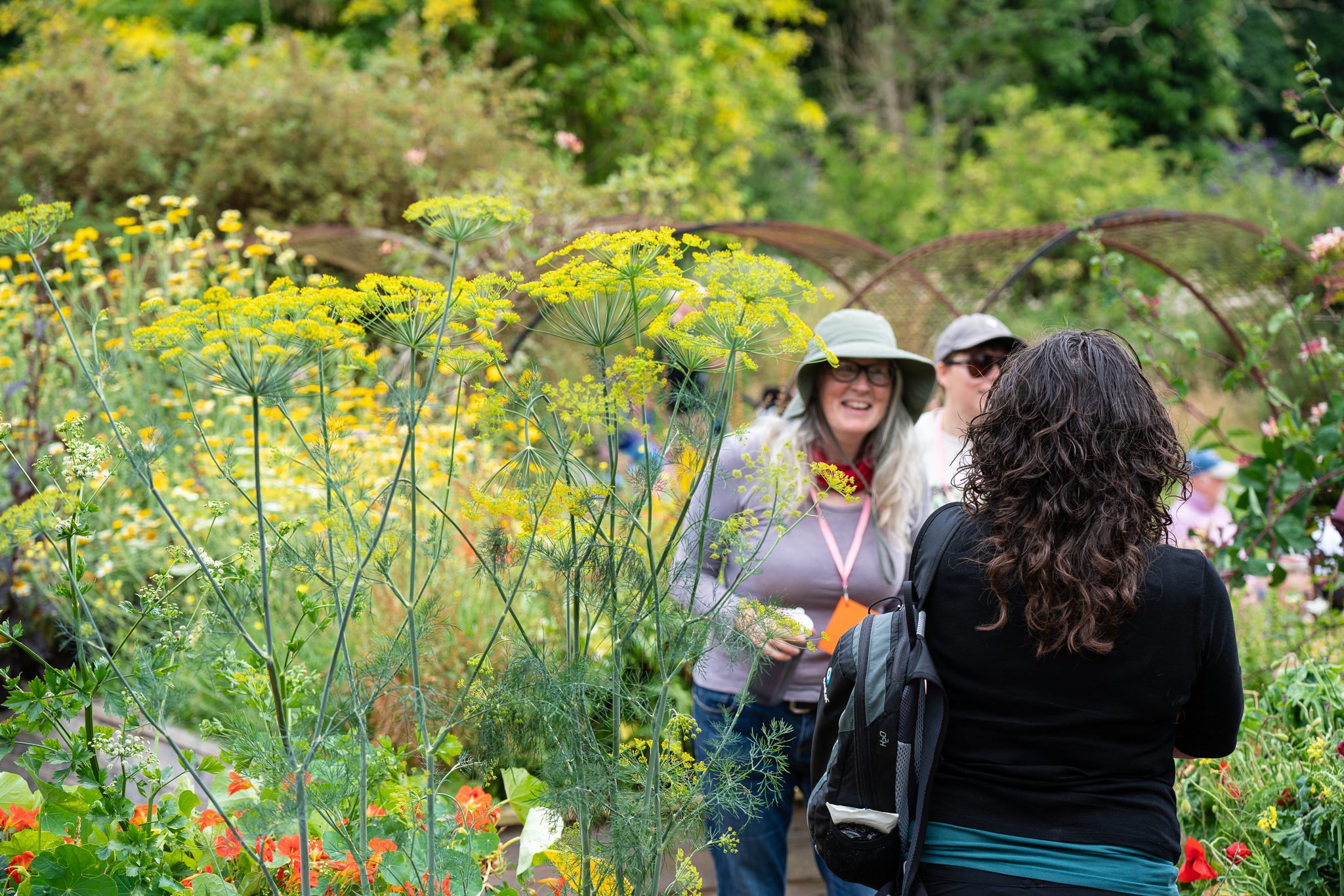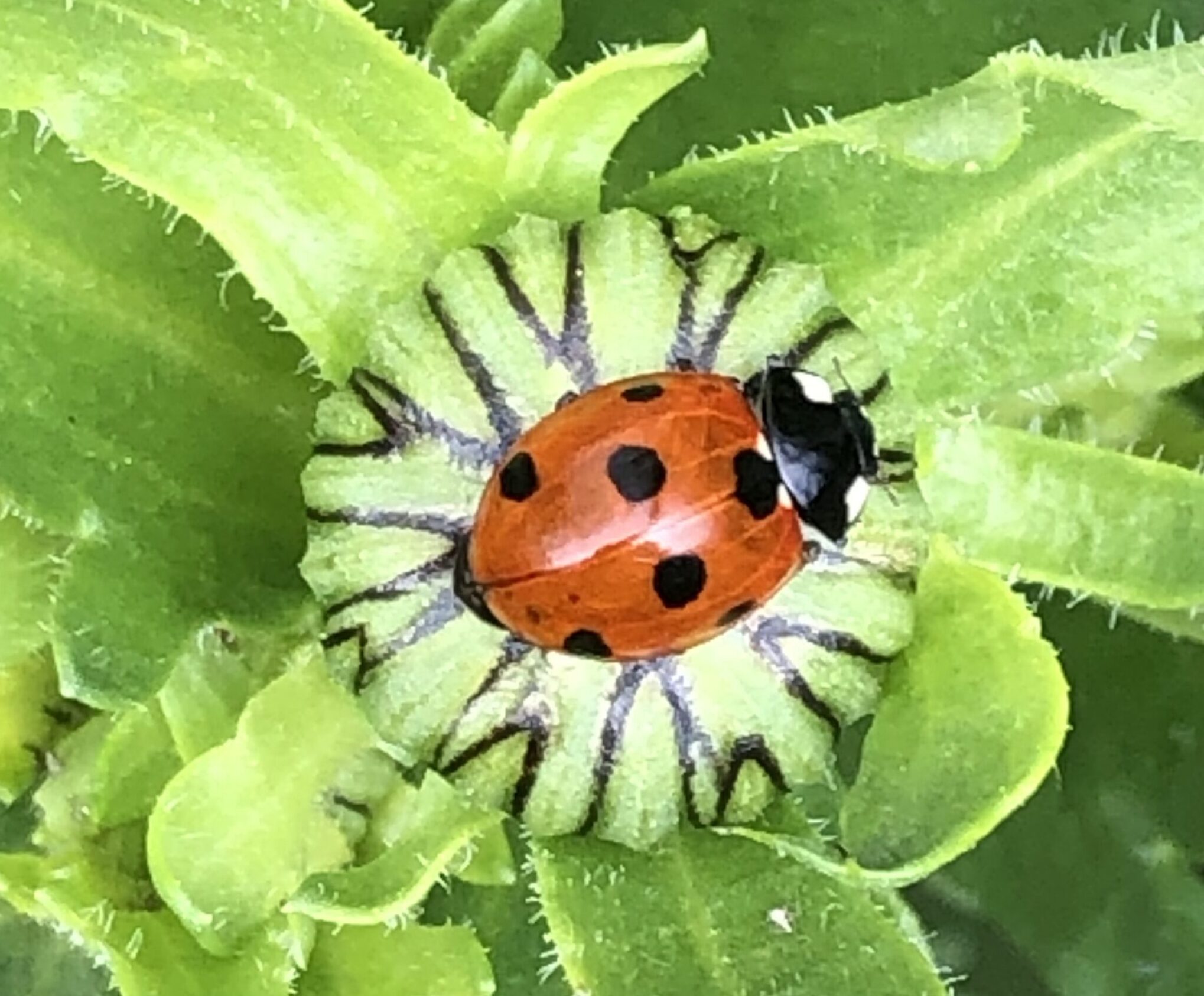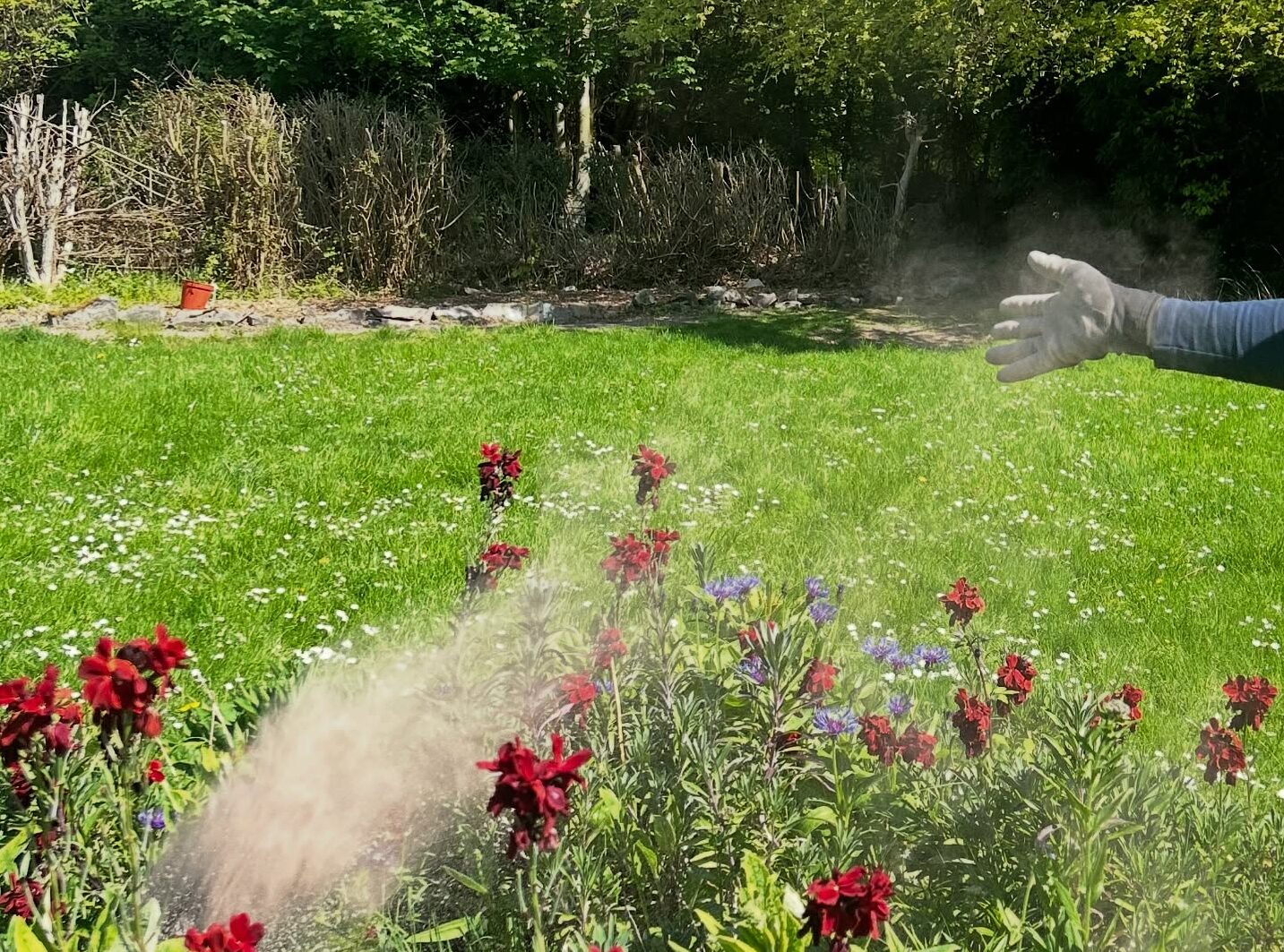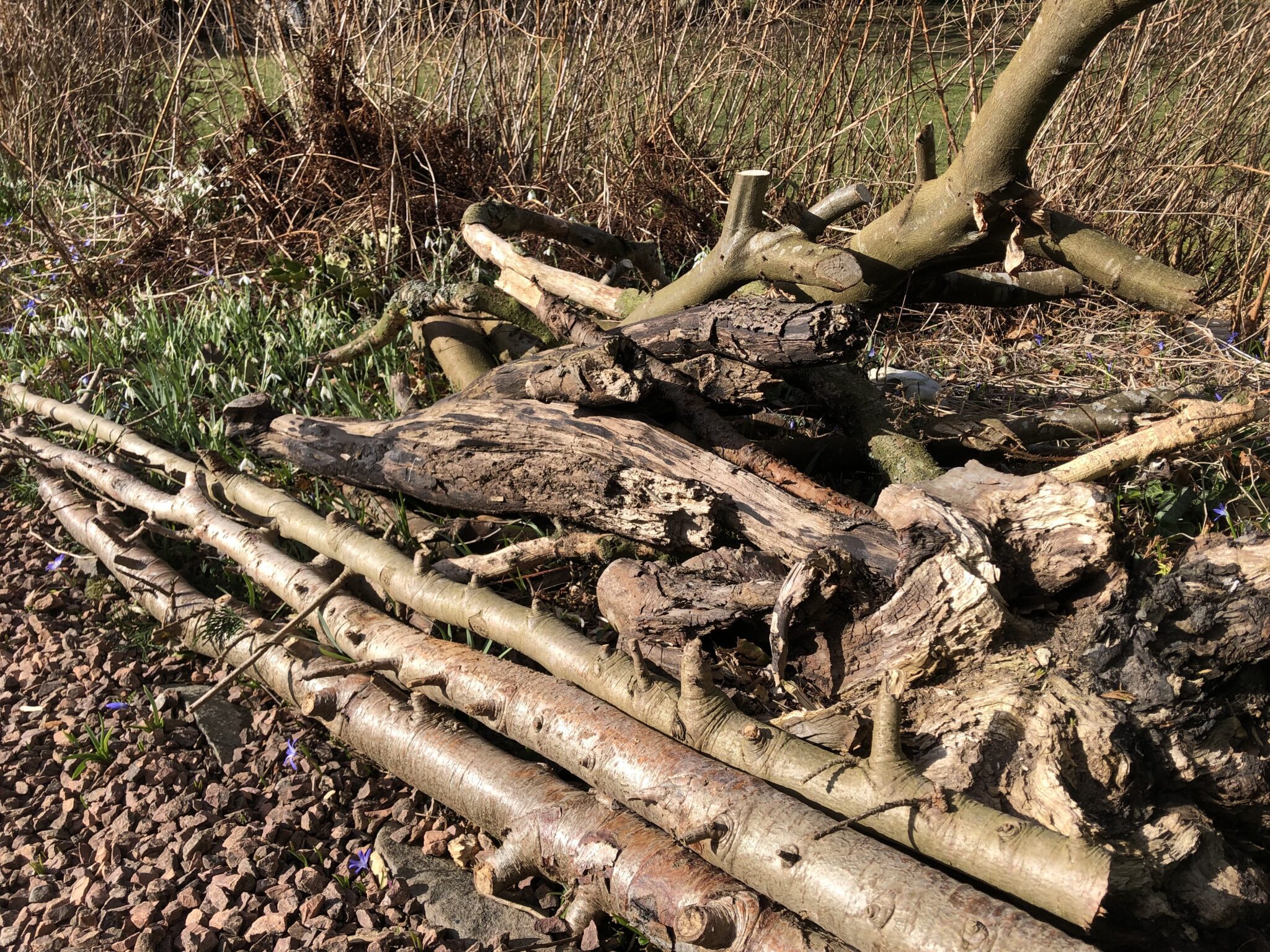We are keenly aware of the unfolding Biodiversity and Climate crises and are taking conscious actions to support and increase the biodiversity we have within our garden and grounds, while gardening in a way that stores carbon in the soil and improves soil health.
Keeping as much of the garden clippings and trimmings onsite as possible helps to keep the carbon captured by plants in the garden, and reduces the amount of bought in compost needed. Ensuring that habitats are available to the small creatures, we can support the food web and ensure the resident birds can feed their chicks, bats can find food, and so on up the food chain.
By increasing the organic matter in the soil, we benefit the soil microbes, which in turn support the plants growing in the soil. Soil with more organic matter can hold more water, which benefits the plants in times of drought as well as reducing water runoff from the site. We have a no herbicide or pesticide policy and focus on hand weeding and mulching bare ground instead. By encouraging beneficial insects to prey on problematic ones, a more complex ecosystem can form.

Habitats and larval food plants are vital for increasing biodiversity. By focusing on native and pollinator plants the potential for more creatures to live in and around Forgan Arts Centre increases. Native plants are beneficial for our native insects, as food, shelter and as a place to lay eggs. In 2025 we started to manage an area of the grass lawn as a meadow, with ox eye daisies, knapweed, clover and other meadow plants. This will take a while to take shape as perennial meadows are slower to establish than annual cornflower meadows which can be sown on bare soil and need annual ploughing or scarifying. Perennial meadow plants often have longer roots, pushing carbon captured from the air further down into the soil profile, and are better able to survive times of drought. We utilise log piles and dead hedges as habitat, borders and a place to let woody material gradually decay.
Our hibernaculum reused grass turfs from another project to build a horseshoe shaped structure with internal airgaps and deadwood as a space for creatures to overwinter in safety, the structure also allows for different temperatures with shaded vs sunny sides to increase the variety of habitat in the garden. A Beetle bump (a small beetle bank) is beside the hibernaculum, encouraging ground beetles and the sandy top provides a nest location for solitary ground nesting bees.

We add rock dust, a byproduct of Basalt rock quarrying, to the compost heaps, wormery and growing spaces. Rock dust adds minerals to the soil for plants to access, and can bind dissolved carbon from the atmosphere in a secure chemical bond, removing the carbon on a scale of 1000’s of years.
Biochar, the principle used to produce the still productive terra preta soils found in the Amazon basin also stores carbon in soil longer term. Carbon stored as charcoal, mixed or infused with compost has a large surface area, providing a home for soil microbes to benefit soil health and the carbon remains stored in the soil in an inert form. We have already produced small volumes of charcoal and added it to the garden and hope to scale up the process.

Woodchip is used extensively in the grounds as a mulch over cardboard to create paths and suppress weeds. We use woodchip to fill the bases of raised beds and leave it in piles to break down to create a mulch for the plants. Our local tree surgeon drops off woodchip as we use it up, allowing us to add organic matter to the ground and turn what would be a waste product into a useful garden addition. The woodchip paths gradually break down and after a year or two can be scraped off and replaced, the old woodchip is added to a compost heap to break down further or used as a mulch on the growing beds. A local pony owner is kind enough to check regularly to see if we need any manure to add to compost heaps or hugelbeds.
Leaf mold is another resource we take advantage of. Our many trees provide the leaves each autumn, and while we leave the leaves where we can in flower beds and edges as hibernation material for insects, including bees, paths and access points are cleared of the fallen leaves and gathered to break down into a mulch we use on growing beds, again to increase organic matter and feed the soil.

